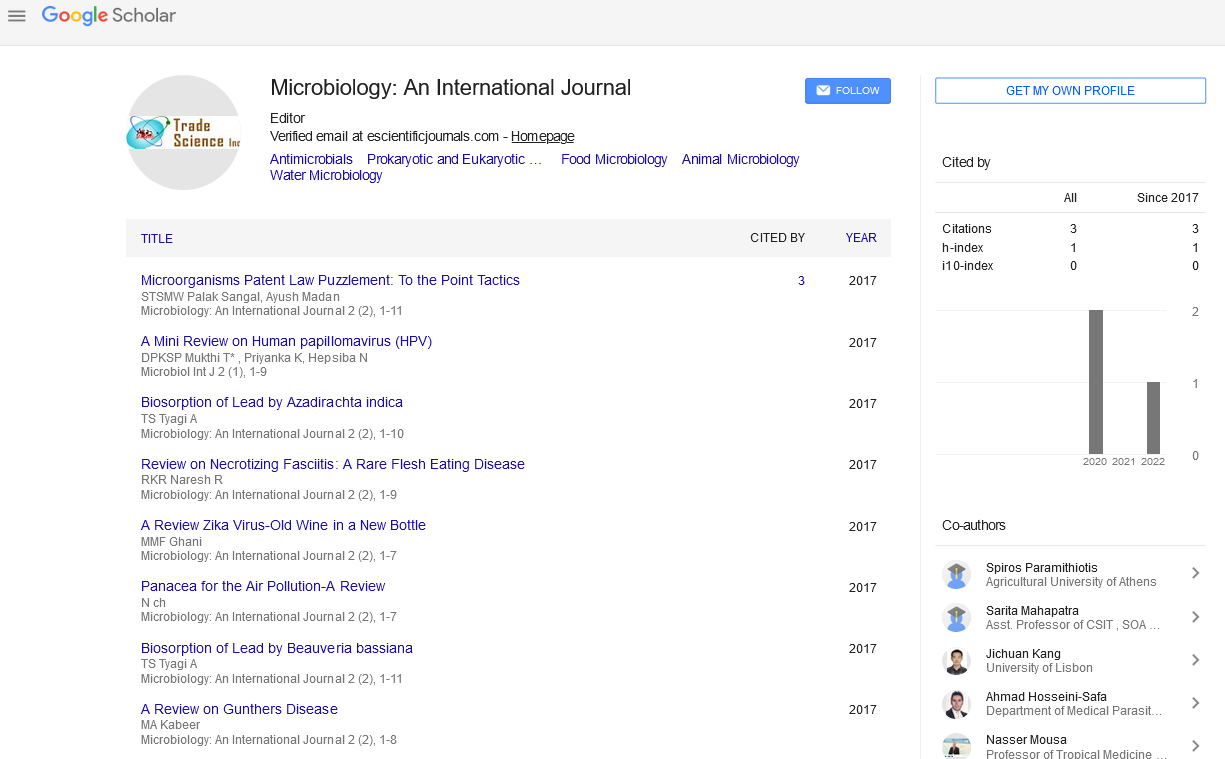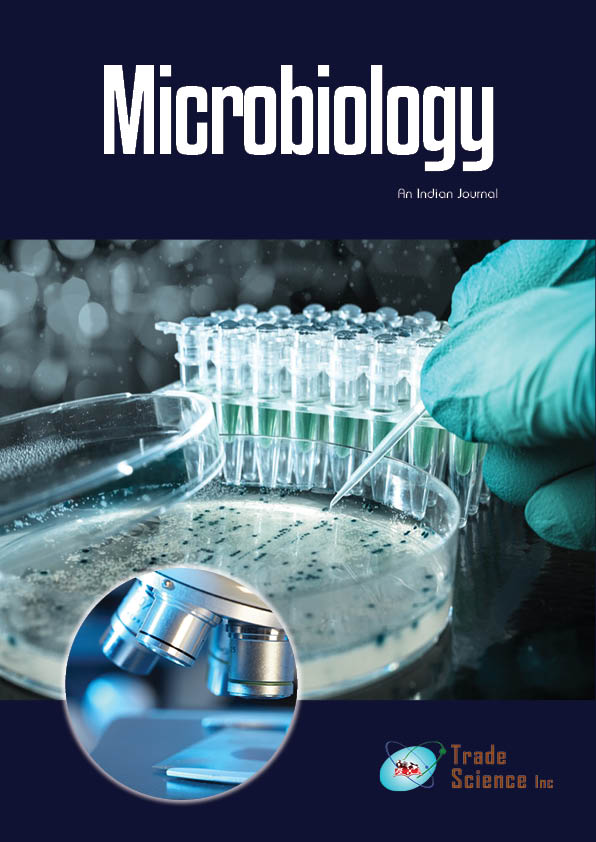Review
, Volume: 4( 1) DOI: 10.37532/tsmy.2022.4(1).134Non-Susceptible to Tigecycline Acinetobacter Baumannii is found all over the world.
- *Correspondence:
- Razia Ansari
Department of Microbiology, Bahauddin Zakariya University, Multan, Pakistan; E-mail: ansari.razia32@gmail.com
Received: 31-Jan-2022, Manuscript No. TSMY-22-56961; Editor assigned: 02-Feb-2022, PreQC No. TSMY-22-56961(PQ); Reviewed: 17-Feb-2022, QC No. TSMY-22-56961; Revised: 21-Feb-2022, Manuscript No. TSMY-22-56961(R); Published: 28-Feb-2022, DOI: 10.37532/tsmy.2022.4(1).134
Citation: Ansari R. Non-Susceptible to Tigecycline Acinetobacter Baumannii is found all over the World. Microbiol Int J. 2022;4(1):134.
Abstract
Acinetobacter baumannii is a Gram-negative, multidrug-resistant (MDR) bacterium that causes nosocomial infections, particularly in critically ill patients with central venous catheters. When compared to other non-baumannii species, A. baumannii has evolved a broad range of antibiotic resistance, which has been linked to a greater mortality rate among infected patients. Resistant strains are linked to longer in-hospital stays and higher mortality rates. A. baumannii can cause a range of infections; the majority affects the respiratory system, particularly ventilator-associated pneumonia, but bacteremia and skin wound infections have also been recorded, the latter of which has been seen frequently in the aftermath of war-related trauma. Meningitis has been linked to A. baumannii in the past. Previous antibiotic use, mechanical breathing, length of ICU/hospital stay, severity of illness, and use of medical devices are the most prominent risk factors for the acquisition of MDR A. baumannii. Current research focuses on all of the antimicrobial resistance mechanisms found in A. baumannii, with the goal of determining the most promising therapy scheme. Therapeutic techniques based on bacteriophage and artilysin have been reported as effective, but more research into their clinical application is needed. The modulations of antibiotic transport through bacterial membranes, mutation of the antibiotic target site, and enzyme alterations that result in antibiotic neutralisation are all examples of antimicrobial resistance mechanisms. There's also talk about virulence factors that can influence antibiotic susceptibility profiles and lead to drug resistance.
Keywords
Acinetobacter Baumannii, Antibiotic Resistance, Septicemia.
Introduction
Antimicrobial resistance (AMR) has emerged as a significant and growing issue, resulting in rising expenses for healthcare systems around the world. It has been linked to increased morbidity, mortality, and expense in recent years as a result of both prolonged hospitalisation and therapy. Resistance appears to be a developing problem with geometric evolution, despite the addition of new antimicrobial drugs to our arsenal in recent decades [1].
Multicenter studies spanning the previous few decades have shown that community-acquired and nosocomial AMR are on the rise, coinciding with the rise in the number of elderly people with main or secondary immunodeficiencies. Acinetobacter baumannii is a Gram-negative bacterium that is mostly responsible for nosocomial infections. It is a member of the Moraxellaceae family. Hospital-acquired and ventilator-associated pneumonia (HAP, VAP), urinary tract infections, meningitis, bacteremia, and gastrointestinal and skin/wound infections are only a few of the illnesses that can be contracted [2].
Carbapenems were once the first line of defence against multidrug-resistant A. baumannii infections, but their widespread use has resulted in an increase in carbapenem resistance in recent years. Although they were formerly avoided due to systemic toxicities (nephrotoxicity and neurotoxicity), polymyxins are now extensively utilised as the antibiotics of choice for MDR A. baumannii infections. Extensive drug resistant (XDR) A. baumannii is an XDR isolate that is resistant to three or more antimicrobial classes (penicillins and cephalosporins—including inhibitor combinations, fluoroquinolones, and aminoglycosides, but not carbapenems in most cases), whereas pandrug resistant (PDR) A. baumannii is an XDR isolate that is resistant to polymyxins and tigecycline. Recently, the discovery of novel antimicrobials and the development of innovative therapeutic techniques have been prompted by widely drug-resistant isolates [3].
There are three types of mechanisms that cause antibiotic resistance. To begin, resistance can be established by lowering membrane permeability or increasing antibiotic efflux, preventing the antibiotic from reaching its target. Second, bacteria can protect the antibiotic target through genetic mutation or post-translational modification, and third, antibiotics can be inactivated directly through hydrolysis or modification [4].
Based on this classification, the mechanisms of A. baumannii antibiotic resistance are summarised. Acinetobacter's amazing genetic flexibility is one of the most critical weapons in its arsenal, allowing for quick genetic changes and rearrangements as well as the integration of foreign determinants carried by mobile genetic components. Insertion sequences are one of the most important factors influencing bacterial genomes and, ultimately, evolution [5].
Conclusion
As stated earlier in the book, A. baumannii can acquire antibiotic resistance by a variety of processes, including changing the drug target site, regulating antibiotic transit through its membranes, and enzymatic alteration of antibiotics to render them neutral. A. baumannii may facilitate antibiotic resistance through a variety of mechanisms linked to its virulence, including outer membrane proteins (like porins), cell envelope factors (like LPS and the capsule around its bacterial surface), specific enzymes (like phospholipases C and D, and glycan-specific adamalysin-like protease CpaA), quorum sensing, and biofilm formation, by achieving twitchin.
References
- Ayoub MC, Hammoudi HD. Insights into Acinetobacter baumannii: a review of microbiological, virulence, and resistance traits in a threatening nosocomial pathogen. Antibiotics. 2020;9(3):119.
- Peleg AY, Seifert H, Paterson DL. Acinetobacter baumannii: emergence of a successful pathogen. Clin Micro Rev. 2008;21(3):538-582.
- Krzysciak P, Chmielarczyk A, Pobiega M, et al. Acinetobacter baumannii isolated from hospital-acquired infection: biofilm production and drug susceptibility. Apmis. 2017;125(11):1017-1026.
- Bonnin RA, Nordmann P, Potron A, et al. Carbapenem-hydrolyzing GES-type extended-spectrum ß-lactamase in Acinetobacter baumannii. Antimicro Agents Chemo. 2011;55(1):349-354.
- Moulana Z, Babazadeh A, Eslamdost Z, et al. Phenotypic and genotypic detection of metallo-beta-lactamases in Carbapenem resistant Acinetobacter baumannii. Caspian J Int Med. 2020;11(2):171.
Indexed at, Google Scholar, Cross Ref
Indexed at, Google Scholar, Cross Ref
Indexed at, Google Scholar, Cross Ref
Indexed at, Google Scholar, Cross Ref

